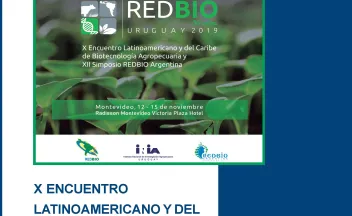INIA 04.01-4: Ciruelo de estación para el sur de Uruguay. [Presentación Poster-P30M4].

A partir del año 2004, INIA comenzó a realizar los primeros cruzamientos y polinizaciones libres en ciruelo japonés.

A partir del año 2004, INIA comenzó a realizar los primeros cruzamientos y polinizaciones libres en ciruelo japonés.

A partir del año 2004, INIA comenzó a realizar los primeros cruzamientos y polinizaciones libres en ciruelo japonés.

El proceso comienza con la elección de los parentales a utilizar según el objetivo buscado, ejemplo:adaptación al ambiente, calidad de fruto, época de cosecha y baja susceptibilidad a enfermedades.

Con el objetivo de ampliar la oferta de fruta fresca de buena calidad en ciruelo japonés, INIA en acuerdo con el vivero Bruzzone, comenzaron actividades de mejoramiento, estudiando cultivares locales con buena adaptación en a las condiciones agroecológicas del país.

ABSTRACT. Land use change is an important driver of trends in streamflow. However, the effects are often difficult to disentangle from climate effects. The aim of this paper is to demonstrate that trends in streamflow can be identified by analysing residuals of rainfall-runoff simulations using a Generalized Additive Mixed Model. This assumes that the rainfall-runoff model removes the average climate forcing from streamflow.

ABSTRACT. Land use change is an important driver of trends in streamflow. However, the effects are often difficult to disentangle from climate effects. The aim of this paper is to demonstrate that trends in streamflow can be identified by analysing residuals of rainfall-runoff simulations using a Generalized Additive Mixed Model. This assumes that the rainfall-runoff model removes the average climate forcing from streamflow.

Abstract Plant breeding for the generation of cultivars adapted to local conditions has been an important and strategic concern of developing countries with agriculture-based economies. Considering economic constraints, breeders must improve genetic gain to increase the delivery of better cultivars with lower costs, through the implementation of molecular breeding and rapid generation advance.

REDBIO, fundada en 1990 por laboratorios y programas nacionales de biotecnología vegetal, y desarrollada con los auspicios de FAO hasta 2011, se ha destacado como la red de biotecnología más importante de América Latina y el Caribe.